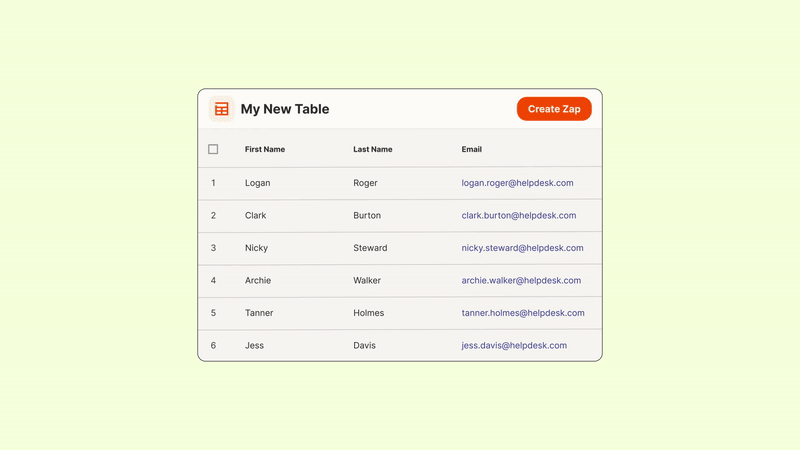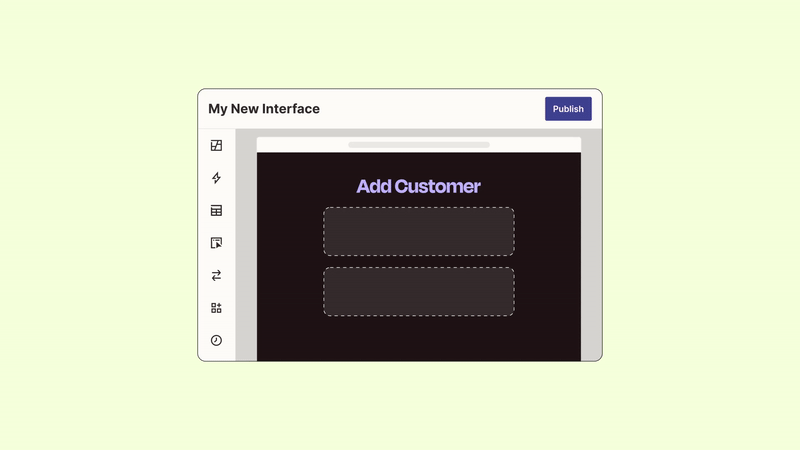For the longest time, Zapier, which launched in 2011, was content with helping its users automate simple workflows and build integrations between various business-critical tools. That’s been a great business for the company, but users today expect a bit more, and over the course of the last couple of years, the company decided it was time to expand its product portfolio. The first of these new products was Transfer, a tool for moving data between apps, which launched last October. Today, at its ZapConnect conference, it’s taking the next step in this journey with the launch of Zapier Tables and Interfaces, a database service and a UI builder for allowing end users to interact with existing Zapier workflows.
Today, the company’s users often use services like Google Sheets as their database, Zapier to essentially create the business logic and then maybe Salesforce or Trello as a kind of front-end to these workflows. In an interview ahead of today’s announcement, Zapier co-founder and president Mike Knoop noted that about half of the service’s usage these days consists of these software-type use cases. But that’s also a very brittle system, where any chance in the spreadsheet will cause the whole system to stop working.
“One of the biggest pain points we heard [about from customers] is that while Zapier has really good coverage over the logic side — the code side if you want to think about it like that — they were just telling us about all of these common pain points like having to integrate third-party tools for the UI and for the data storage layer,” Knoop said.
Since Google Sheets or even newer tools like Airtable weren’t designed to be systems of record for an automation system, there are limitations to the kinds of automations that tools like Zapier can build on top of them.
“Building an automation-first version of Tables has allowed us to get high-velocity change records and say, ‘okay, we’re gonna protect this system and if you make this change we’re automatically gonna sink it to the underlined system or alert you about which apps are dependent on it.’ We basically just went down the list of all the common failures,” Knoop explained.
And while Tables sits on one side of the equation here, Zapier Interfaces represents the other side, with a focus on end users. The idea here is to allow users to create customizable and dynamic web pages that work with Zapier and a database, whether that’s Tables or not. Knoop noted that users today often build these systems themselves, but they, too, are brittle and hard to maintain after the initial setup. With this new tool, users can build forms, edit data, share it and launch triggers for their automations — all with a straightforward drag-and-drop interface.
All of these new features are part of Zapier’s new Early Access program, which currently includes Transfer, Tables and Interfaces. Knoop wouldn’t quite say what the company will work on next, but there are obviously plenty of other pain points the company could address directly.
This is definitely an interesting move for Zapier. Knoop acknowledged that the company got a bit complacent and recently had to play catch-up to meet its customers needs. That took a bit of a shift in the company culture around innovation, but that work is starting to pay off, it seems.
In this context, it’s worth noting that in addition to these two new marquee products, the company also launched eight of its users’ top requested features, including the ability to draft Zapts, versioning, new tools for building more complex Zaps, the ability to schedule transfers in Transfer, custom error notifications for users on some of the higher-priced tiers, subfolders and the addition of a super admin level.
Zapier extends its automation service with first-party database and UI tools by Frederic Lardinois originally published on TechCrunch

















 English (US) ·
English (US) ·